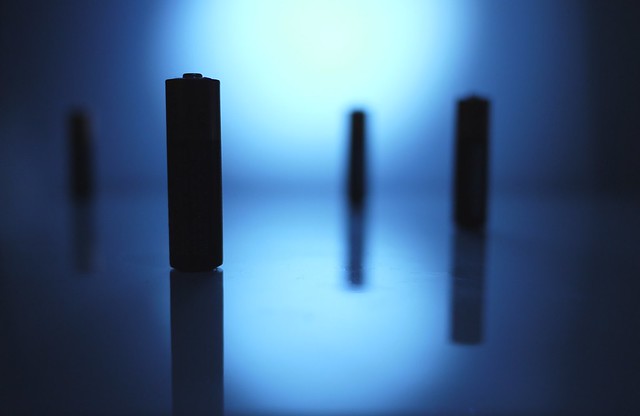Lithium Ion Battery Formation Process
Oct 14, 2019 Pageview:2471
Introduction
Lithium-ion batteries are the common power sources in most portable electric devices and electric vehicles. This battery technology is characterized by increased energy density. Research is ongoing with a focus to further increase the energy density of these batteries, where many scientists are developing and improving cathode materials and anode materials for high voltage and high energy density. At the same time, scientists are looking into various ways of reducing lithium-ion battery production costs without sacrificing cell performance, especially for electric vehicle applications.
Currently, there is so much going on about the lithium-ion battery technology. Since numerous gadgets utilize this battery technology, we would want to know how these batteries are manufactured. The information about lithium-ion battery formation is interesting, particularly because this is the latest battery technology.
The manufacturing process of lithium-ion batteries is somewhat similar to the processes used in the production of Nickel Cadmium cells and Nickel Metal Hydride cells, but there are some key differences that are associated with the higher reactivity of the chemicals used in the lithium cells. Read on to discover more about how lithium-ion batteries are manufactured.
How are lithium batteries manufactured?
The production of the lithium-ion battery consists of three main processes; electrode manufacturing, cell assembly, and cell finishing. The formation process for the lithium battery typically takes several days or more, and this is necessary for providing stable solid electrolyte interphase on the anode to prevent irreversible consumption of the electrolyte and the lithium ions. An analogous layer known as the cathode electrolyte interphase layer forms at the cathode at high potentials versus Li/Li+.
Let’s look at three main processes involved in the manufacturing of lithium batteries.
1. Electrode Manufacturing
It’s important to note that the anodes and the cathodes in the lithium cells are of similar form and are made through similar processes or identical equipment. Electrode manufacturing can also be referred to as electrode coating. In this process, the active electrode materials are coated on both sides of metallic foils which at this stage act as current collectors conducting current in and out of the cell. The anode is usually made of carbon while the cathode is a lithium metal oxide. These materials have to be supplied to the factory mainly in the form of black powder, and if you are not very careful, they look almost indistinguishable from each other. Contamination between the anode and the cathode materials must be avoided at all costs as it will ruin the battery. Therefore, great care must be ensured to prevent these materials from coming into contact with each other. This explains the reason why the anodes and the cathodes are processed in different rooms.
Great attention must be given to the particle size in order to ensure that it is kept at its minimum to achieve the maximum effective surface area of the electrodes needed for high current cells. Also, the shape of the particle is important. Usually, the smooth spherical shapes with rounded edges are considered most desirable compared with sharp edges or flaky surfaces which are susceptible to higher electrical stress and decomposition of the anode passivating SEI layer, which can lead to the generation of great amounts of heat and even possible thermal runaway when the cells are in use.
The metal electrode foils are supplied on large reels, where copper is for the anode and aluminum for the cathode. The reels are then mounted directly on the coating machines where the foil is unreeled and put into the machine through precision rollers.
First, the electrode materials are mixed with a conducive binder to form a slurry which is then spread on the surface of the foil as it passes into the machine. The thickness of the coating layers must be set to allow the energy storage per unit of the anode and the cathode electrodes to be matched.
The coated foil is then fed directly into a long drying oven to bake the electrode material onto the foil. As the coated foil leaves the oven it is re-reeled. The re-reeled foils are fed into slitting machines where they’re cut into narrower strips that are suitable for different sizes of electrodes. Then they are cut to length.
2. Cell Assembly
The second process in the manufacturing of lithium batteries is the cell assembly. This proves can be carried out on highly automated equipment or through manual assembly methods.
The first stage in this process is to build the electrode sub-assembly whereby the separator is put between the anode and the cathode. Oftentimes, two basic electrode structures are used depending on the type of cell casing to be used; a stacked structure for use in prismatic cells and a spiral wound structure for use in cylindrical cells.
· Prismatic cells
The prismatic cells are the most preferred choice for high capacity battery applications to optimize the use of space. These cells utilize a stacked electrode structure in which the anode and the cathode foils are cut into individual plates and stacked alternatively and kept apart by the separator. The separator is usually applied in a long strip wound in a zigzag shape alternate electrodes in the stack.
This case design makes optimum use of space when used in a battery pack, but it requires multiple electrode plates which need to be clamped in a certain manner to connect all the anodes together and to maintain the terminal post and a similar clamping mechanism for the cathodes. This increases the complexity and labor content of the cell and ultimately the costs.
· Cylindrical cells
For the cylindrical design, the anode and cathode foils are cut into two long strips which are wound on a cylindrical mandrel, together with the separator which keeps them apart. Therefore, you can see that cylindrical cells have only two electrode strips which thus simplifies the construction considerably.
Each electrode is connected to its corresponding terminal using a single tab. However, high power cells may have multiple tabs put along the edges for the electrode strip to carry the higher currents.
The electrode structure is connected to the terminals along with any safety devices and then inserted into the can. The can is then sealed in a heating process or laser welding, leaving an opening for injecting the electrolyte into the can.
The cell is then filled with an electrolyte and sealed. This must be done in a dry room to avoid a reaction between the electrolyte and water happening.
The complete cell is given an identification with a label.
Fast formation cycling for lithium-ion batteries
This happens once the cell assembly is complete. Fast formation cycling means that the cell is put through at least one precisely controlled charge/discharge cycle that is meant to activate the working materials, thus transforming them into their functional form. The charging process starts with a low voltage which builds up gradually, instead of the normal constant current – voltage charging curve that we use on our lithium batteries. That’s why it’s called fast formation cycling.
For nearly all lithium chemistries, this process involves creating the solid electrolyte interface (SEI) on the anode. SEI is a passivating layer that is essential for moderating the charging process under normal use.
During the formation process, data on the cell performance such as capacity and impedance are gathered and recorded for quality analysis and traceability.
Theory and end-of-life testing of lithium-ion batteries?
Nearly all portable electronic devices are using lithium-ion batteries. At the same time, the number of electric vehicles is increasing, so there is a need to have a well-defined end-of-life strategy for the batteries.
The formation process allows a significant percentage of early cell life failures due to manufacturing defects to occur in the manufacturer’s plant rather than at the customer’s premises. Strict process controls are essential throughout the manufacturing process.
Environmental regulations such as End-of-Vehicle directives require the automakers to take extended responsibility for their vehicles and components after use. It requires that the automakers either take back their products to reuse, recycle and remanufacturing or delegate this responsibility to a third party.
Recycling has been proposed in many pieces of literature as the end-of-life strategy for lithium-ion batteries.
Conclusion
Now you have learned how lithium-ion batteries are manufactured. The manufacturing takes several days or more. The manufacturing of this battery technology involves three processes; electrode manufacturing, cell assembly, and cell finishing. Cell assembly and cell finishing cannot be separated. The processes must be done carefully to prevent contamination of the materials.
- Prev Article: Social Impact of Lithium Ion Batteries
- Next Article: Lithium-ion Battery Hybrid
Leave Message
Hottest Categories
-
Hottest Industry News
-
Latest Industry News











